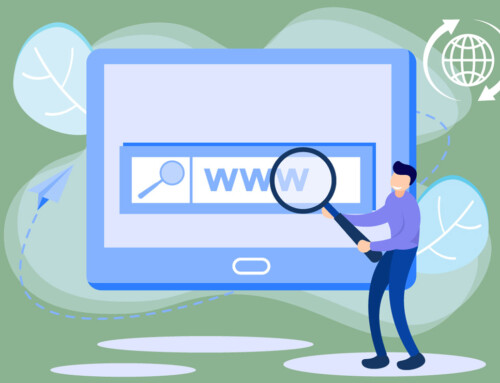Contents
Introduction
As we move into 2024, law firms continue to navigate the complex and ever-evolving challenges of modern legal practice, particularly in optimizing client intake processes. The transition towards digital solutions has become imperative, providing a strategic advantage by enhancing organization, workflow, and client satisfaction. This blog post will explore the latest client intake best practices that are shaping the legal industry. With a focus on the role of technology, particularly the functionalities offered by platforms, we will delve into how digital tools can streamline the intake process, ensuring efficiency and security while improving the overall client experience. Embrace these insights to keep your firm at the forefront of innovation and client service excellence.
Leverage Technology for Efficiency
In the dynamic world of law, efficiency isn’t just a benefit; it’s a necessity. As client expectations evolve and the demand for faster, more accurate services increases, technology emerges as a critical ally. Legal software, plays a pivotal role in transforming client intake from a cumbersome, error-prone process into a streamlined, efficient operation.
By integrating legal software for data management and CRM, law firms can significantly automate the intake process. This automation goes beyond simple data entry; it encompasses the entire ecosystem of client interactions, from initial contact to case resolution.
Moreover, the time savings are substantial. Automated data processes free up legal staff to focus on more critical, billable tasks—enhancing productivity and boosting firm profitability. The reduced need for repetitive tasks also minimizes fatigue and increases job satisfaction among team members, contributing to a more motivated workforce.
Incorporating technology not only optimizes operational efficiencies but also provides a robust platform for managing client relationships. The CRM capabilities ensure that every client interaction is logged and accessible, making follow-ups more timely, and personalized. This level of detail enriches the client experience, fostering stronger relationships and enhancing client loyalty.
Thus, the use of technology in client intake is not just about keeping up with trends; it’s about setting a standard of excellence in legal practice that prioritizes precision, efficiency, and client satisfaction.
In the dynamic world of law, efficiency isn’t just a benefit; it’s a necessity. As client expectations evolve and the demand for faster, more accurate services increases, technology emerges as a critical ally. Legal software, plays a pivotal role in transforming client intake from a cumbersome, error-prone process into a streamlined, efficient operation.
By integrating legal software for data management and CRM, law firms can significantly automate the intake process. This automation goes beyond simple data entry; it encompasses the entire ecosystem of client interactions, from initial contact to case resolution.
Moreover, the time savings are substantial. Automated data processes free up legal staff to focus on more critical, billable tasks—enhancing productivity and boosting firm profitability. The reduced need for repetitive tasks also minimizes fatigue and increases job satisfaction among team members, contributing to a more motivated workforce.
Incorporating technology not only optimizes operational efficiencies but also provides a robust platform for managing client relationships. The CRM capabilities ensure that every client interaction is logged and accessible, making follow-ups more timely, and personalized. This level of detail enriches the client experience, fostering stronger relationships and enhancing client loyalty.
Thus, the use of technology in client intake is not just about keeping up with trends; it’s about setting a standard of excellence in legal practice that prioritizes precision, efficiency, and client satisfaction.
Implement Comprehensive and User-Friendly Intake Forms
A critical component of an effective digital client intake system is the implementation of comprehensive yet user-friendly intake forms. These forms are the first point of detailed interaction a client has with a law firm, and as such, they set the tone for the client’s entire experience. It’s essential that these forms are designed to be intuitive and straightforward, ensuring that clients can provide all necessary information without feeling overwhelmed.
The benefits of well-designed intake forms extend beyond client satisfaction. They also contribute to better data quality and completeness, which are crucial for effective case management. By ensuring that all relevant details are accurately captured at the outset, law firms can avoid the need for follow-up calls that can delay case progression and consume valuable resources.
Moreover, the strategic use of these forms can significantly reduce administrative burdens on staff. With data automatically flowing into the firm’s case management system, the need for manual data entry is minimized, reducing the risk of errors and saving time.
Prioritize Communication and Accessibility
Effective communication forms the backbone of successful client intake processes. It is imperative for law firms to prioritize clear and accessible communication channels to enhance client engagement and satisfaction. This commitment to open communication ensures that potential clients feel valued and well-supported from their very first interaction with the firm.
Utilizing multiple communication platforms such as email, phone calls, and online messaging is essential. This diversity allows clients to choose their preferred method of communication, catering to different comfort levels and technological proficiencies. For instance, while some clients may prefer the immediacy of a phone call, others might find detailed email correspondences more reassuring.
Moreover, accessibility is another crucial aspect. Law firms must ensure that their contact information, along with clear instructions on the intake process, is easily accessible. This could be prominently displayed on the firm’s website, in email signatures, and on social media profiles. Transparency about what new clients can expect during the intake process can significantly reduce anxiety and build trust.
In practice, prioritizing communication and accessibility not only streamlines the intake process but also builds a strong foundation for ongoing client relationships. Clients who find it easy to communicate with their law firm and understand the steps involved in their case are more likely to feel satisfied with the service they receive, leading to higher retention rates and positive referrals.
Adopt a Client-Centered Approach
Effective communication forms the backbone of successful client intake processes. It is imperative for law firms to prioritize clear and accessible communication channels to enhance client engagement and satisfaction. This commitment to open communication ensures that potential clients feel valued and well-supported from their very first interaction with the firm.
Utilizing multiple communication platforms such as email, phone calls, and online messaging is essential. This diversity allows clients to choose their preferred method of communication, catering to different comfort levels and technological proficiencies. For instance, while some clients may prefer the immediacy of a phone call, others might find detailed email correspondences more reassuring.
RunSensible facilitates this multi-channel communication approach by integrating various communication tools into its platform, allowing legal professionals to maintain consistent and organized interactions with clients. This capability ensures that no message is lost or overlooked, which can often be a challenge in busy law firm environments.
Moreover, accessibility is another crucial aspect. Law firms must ensure that their contact information, along with clear instructions on the intake process, is easily accessible. This could be prominently displayed on the firm’s website, in email signatures, and on social media profiles. Transparency about what new clients can expect during the intake process can significantly reduce anxiety and build trust.
In practice, prioritizing communication and accessibility not only streamlines the intake process but also builds a strong foundation for ongoing client relationships. Clients who find it easy to communicate with their law firm and understand the steps involved in their case are more likely to feel satisfied with the service they receive, leading to higher retention rates and positive referrals.
Ensure Information Security and Confidentiality
In today’s digital landscape, information security and confidentiality are paramount, particularly for law firms where sensitive client data is frequently handled. Ensuring the security of this data is not just a matter of ethical responsibility and compliance with regulations but also a critical factor in maintaining client trust and protecting the firm’s reputation.
Education on security practices plays a crucial role as well. Law firms must regularly train their staff to recognize and respond to security threats like phishing attempts. This training should be part of an ongoing security protocol that evolves with the changing cyber threat landscape to keep everyone updated on the latest preventive measures.
Moreover, law firms should establish clear protocols for handling and sharing client information. These protocols help prevent accidental data breaches and ensure that all team members understand their roles in protecting client confidentiality. Regular audits of these protocols can also help identify potential security gaps and provide opportunities for improvement.
By taking these comprehensive security measures, law firms not only protect their clients’ data but also reinforce their commitment to professionalism and ethical practice. Clients are more likely to trust and continue their relationship with a firm that demonstrates a serious commitment to securing their information.
Be Transparent About Fees and Costs
Transparency regarding fees and costs is essential for building and maintaining trust with clients. Clear communication about billing structures, payment options, and any financial obligations from the outset can prevent misunderstandings and foster a transparent relationship. This openness is especially critical in the legal industry, where concerns about cost can be a significant barrier to accessing services.
RunSensible offers an integrated solution that facilitates this transparency. The platform includes features for detailed billing, payment processing, and even trust accounting, all in one place. By utilizing these tools, law firms can provide their clients with straightforward, itemized bills that clearly outline charges and services rendered. This clarity helps clients understand exactly what they are paying for, which can alleviate concerns about hidden fees or the value of the service they are receiving.
Additionally, discussing financial expectations during the initial client intake process can set the tone for the entire client relationship. It allows clients to make informed decisions based on their financial circumstances and the potential costs involved in their cases. Law firms can use this opportunity to explain the value they provide, reinforcing why their services are worth the investment.
Moreover, offering a variety of payment options can also enhance client satisfaction. Flexible payment solutions, such as installment plans or various online payment methods, accommodate different financial situations and preferences, making legal services more accessible.
Ultimately, being upfront about fees not only demonstrates a firm’s integrity but also contributes to a more satisfying client experience. Clients appreciate when law firms are honest and upfront about costs, as it helps them feel respected and valued. This approach can lead to higher client retention rates and positive word-of-mouth referrals, which are invaluable for any law firm’s growth and reputation.
For further insights into optimizing your law firm’s financial transparency and efficiency, we recommend checking out this blog for our comprehensive Starter Guide to Legal Accounting.
Technological Enhancements in Client Intake
The integration of technological enhancements has significantly revolutionized the client intake process, making it more efficient and user-friendly. Key innovations such as document automation and e-signatures have streamlined the onboarding of new clients, reducing the time and paperwork involved in starting a legal case.
Document automation plays a crucial role by generating necessary legal documents based on pre-defined templates and client information automatically entered during the intake process. This not only speeds up document preparation but also reduces human errors.
E-signatures have also become an indispensable tool in modern legal practices. They allow clients to sign documents digitally from anywhere, at any time, removing the need for physical presence and expediting the approval processes.
By embracing these technological enhancements, law firms can significantly improve the efficiency of their client intake processes. This not only boosts productivity but also enhances the client experience, providing a seamless transition from prospective client to active case management.
Security and Privacy in the Digital Age
As law firms increasingly adopt digital tools for client intake and case management, the importance of ensuring data security and privacy cannot be overstated. In the digital age, clients entrust sensitive personal and financial information to their legal advisors, expecting the highest standards of confidentiality and security.
In addition to technological safeguards, law firms must also foster a culture of privacy awareness among their staff. Regular training on the latest cybersecurity practices and data protection laws is essential to keep all team members aware of the best practices for handling and securing client information. These educational efforts help prevent human errors, which are often the weakest link in data security.
By prioritizing security and privacy in their digital client intake processes, law firms not only comply with legal and ethical standards but also build trust with their clients. This trust is foundational to successful client relationships and the firm’s reputation in the competitive legal market.
Client-Centered Intake Strategies
A client-centered approach during the intake process is vital for establishing a strong foundation for the attorney-client relationship. This strategy focuses on understanding and addressing the individual needs and goals of each client, ensuring that they feel heard, respected, and valued from the very first interaction.
Emphasizing a client-centered approach involves actively seeking to understand the client’s perspective, which can be achieved through detailed consultations and thoughtful, open-ended questioning. This allows lawyers to tailor their advice and services to the specific circumstances and goals of each client, rather than adopting a one-size-fits-all approach.
Moreover, adopting a client-centered strategy often involves providing multiple communication and meeting options, recognizing that different clients have different preferences and constraints.
By employing client-centered intake strategies, law firms can significantly enhance client satisfaction and loyalty. This approach not only leads to more effective legal outcomes by ensuring that all client concerns are thoroughly addressed from the outset but also enhances the overall client experience, setting the stage for long-term professional relationships.
Continuously Improve the Intake Process
To remain competitive and effective, law firms must regularly assess and refine their client intake processes based on client feedback and technological advancements. Continuous improvement ensures that the intake process stays efficient, responsive, and aligned with the evolving needs of clients and the legal market.
Regularly soliciting feedback from clients is a critical component of this ongoing improvement. By asking clients to share their experiences and suggestions after they have completed the intake process, law firms can gain valuable insights into what works well and what may need adjustment. This feedback can highlight areas of friction, confusion, or dissatisfaction that might not be apparent from an internal perspective.
Technological advancements also play a significant role in continuously improving the intake process. As new technologies emerge, they often offer new ways to enhance efficiency, security, or client satisfaction. For example, advancements in AI and machine learning could lead to more sophisticated client interaction tools, predictive analytics for legal outcomes, or even more robust security measures.
By committing to continuous improvement, law firms can not only enhance their operational efficiency but also improve their service quality. This proactive approach to adaptation and growth demonstrates to clients that the firm is dedicated to excellence and client satisfaction, fostering stronger relationships and a better reputation in the legal community.
Empowering Law Firms with RunSensible
The adoption of best practices for client intake can fundamentally transform the relationship between clients and law firms. By implementing the strategic advancements discussed, law firms not only enhance their operational efficiency but also significantly improve client satisfaction. This transformation is crucial for firms aiming to thrive in the competitive legal market of 2024 and beyond.
RunSensible’s legal case management software and CRM features stand at the forefront of empowering law firms to implement these best practices effectively. With tools designed to optimize every aspect of the client intake process, from automation to secure data management, RunSensible supports law firms in their quest to offer exceptional service.
In conclusion, by leveraging the right technologies and strategies, law firms can ensure they are not just keeping up with the times but are setting the standards in client service and operational excellence.
Conclusion
As we look to the future, the role of digitalization in the legal sector continues to grow, emphasizing the need for law firms to adapt and innovate. Embracing best practices for client intake is not just about implementing new technologies but also about enhancing the client experience, securing sensitive information, and improving operational efficiencies. By adopting these best practices, law firms can foster stronger relationships with their clients, mitigate risks, and position themselves as leaders in a competitive market. We encourage law firms to continuously explore and integrate these innovations, ensuring that they remain at the cutting edge of client service and operational success. As you seek to refine your client intake process, remember that the journey is one of constant improvement and adaptation to the changing landscape of the legal industry.
Discover how RunSensible can revolutionize your law firm’s client intake process. Streamline operations, enhance client satisfaction, and stay ahead in 2024.
FAQs
1. What are the main advantages of digital client intake processes for law firms?
Digital client intake processes streamline workflow, improve organization, and enhance the overall client experience by reducing wait times and errors associated with manual data entry. These systems allow for quicker response to client inquiries and easier access to client data, making them invaluable in today’s fast-paced legal environment.
2. What measures can law firms take to protect the confidentiality and security of client information in digital intake systems?
Law firms must prioritize the security of digital intake systems by implementing robust measures such as encryption, two-factor authentication, and regular security audits. Educating staff on security best practices and phishing awareness is also crucial to safeguard sensitive client data from unauthorized access.
3. What are the key benefits of using RunSensible for client intake?
RunSensible streamlines the client intake process by automating data entry, managing client communications through a single platform, and ensuring that all client information is secure. This not only saves time but also enhances the accuracy and efficiency of legal operations, improving overall client satisfaction.
Disclaimer: The content provided on this blog is for informational purposes only and does not constitute legal, financial, or professional advice.








